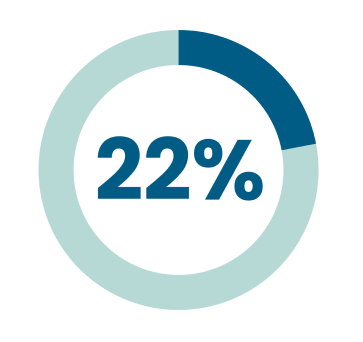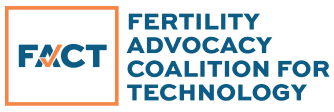IVF Success
Rates

IVF Success
Rates at Risk
The impact of ART on Infertility
Reproductive endocrinology and fertility treatments have rapidly advanced to reduce many of the challenges associated with infertility.50 Since reporting began in 1987, improvements in assisted reproductive technology (ART) have led to 1.6 million new births in the U.S.3-4 In 2021 alone, 238,000 ART procedures were performed across 453 clinics in the U.S.51
U.S. Assisted Reproductive Technology Success Rates3-4

ART success rate on track to rival natural conception.31-34
The live birth success rate of ART (assisted reproductive technology) pregnancies is approaching that of natural conception when accounting for risks.31-34 A key factor has been the use of preimplantation genetic testing (PGT-A), which reduces the risk of transferring embryos with chromosomal abnormalities that could lead to miscarriages.
Pregnancy Probability and Live Birth Success Rate by Age31-34

The U.S. leads all countries in ART success rates1
ART efficiency in Europe and the U.S. are distinctively different, these differences appear primarily driven by greatly diverging regulatory environments and at least based on pregnancy rates, do not appear to benefit the European population.2
ART Live Birth Success Rate Among Leading Countries1


ART live birth success rate increase between U.S. vs. Europe1†

ART live birth success rate global average (2019)
1. Kupka MS et al., International Committee for Monitoring Assisted Reproductive Technology world report: assisted reproductive technology, 2015 and 2016, Fertility and Sterility (2024), doi: https://doi.org/10.1016/j.fertnstert.2024.07.009.
2. Gleicher N, Weghofer A, Barad D. A formal comparison of the practice of assisted reproductive technologies between Europe and the USA. Hum Reprod. 2006 Aug;21(8):1945-50.
* Estimated from all reporting clinics in France.
† Europe 2016 ART success rate 20.5%.
ART= Assisted reproductive technology
Limiting genetic testing has a downside.
Despite performing more than twice as many ART (assisted reproductive technology) cycles as the U.S., Japan has one of the lowest success rates for IVF.53 This is likely due to the Japanese Society of Obstetrics and Gynecology strict limits on preimplantation testing. Without PGT testing, poor-quality embryos that may not reach the blastocyst (i.e., a cluster of dividing cells made by a fertilized egg) stage are often transferred.54
ART Live Birth Success Rate Japan vs. U.S. 2007-202155,56



